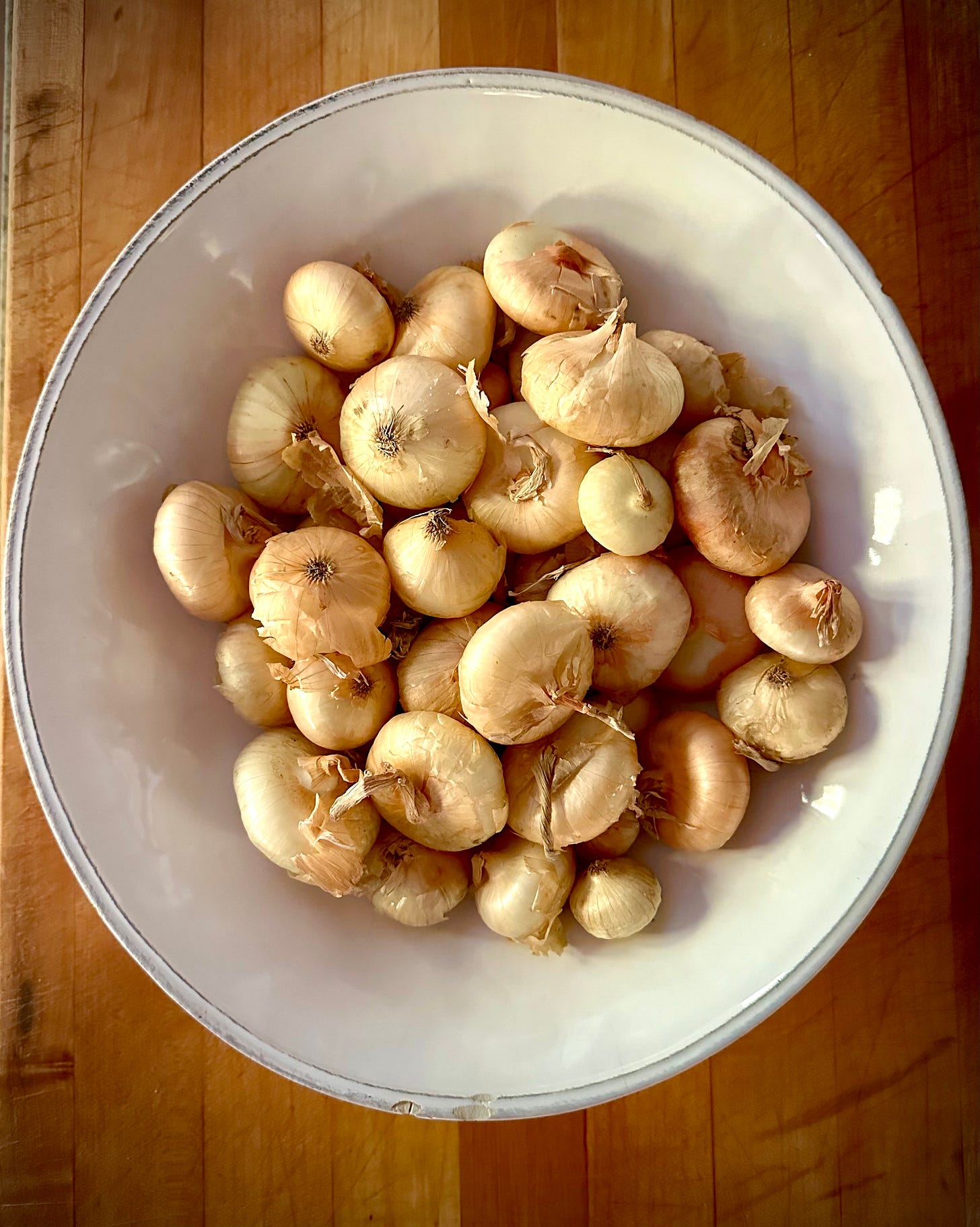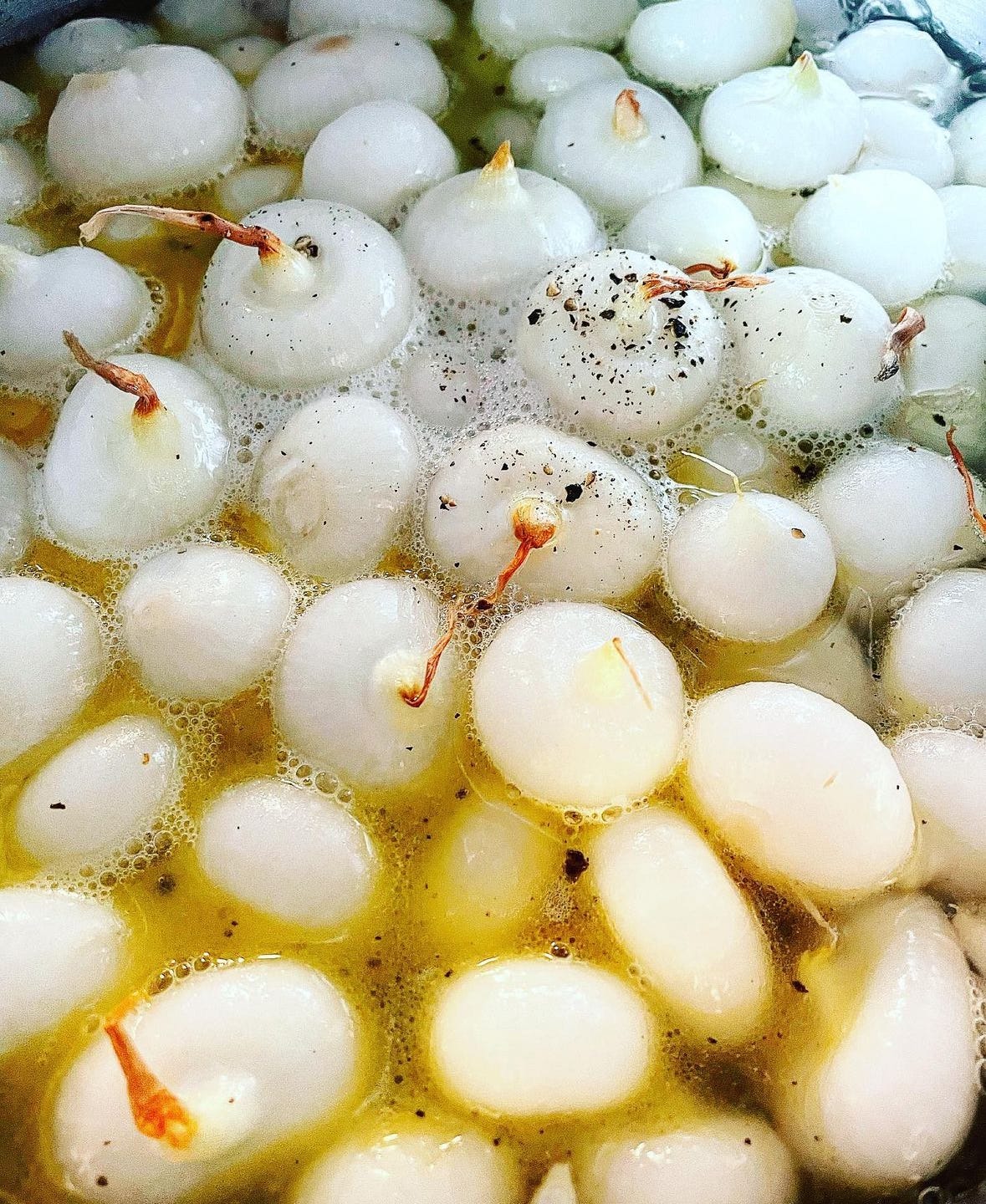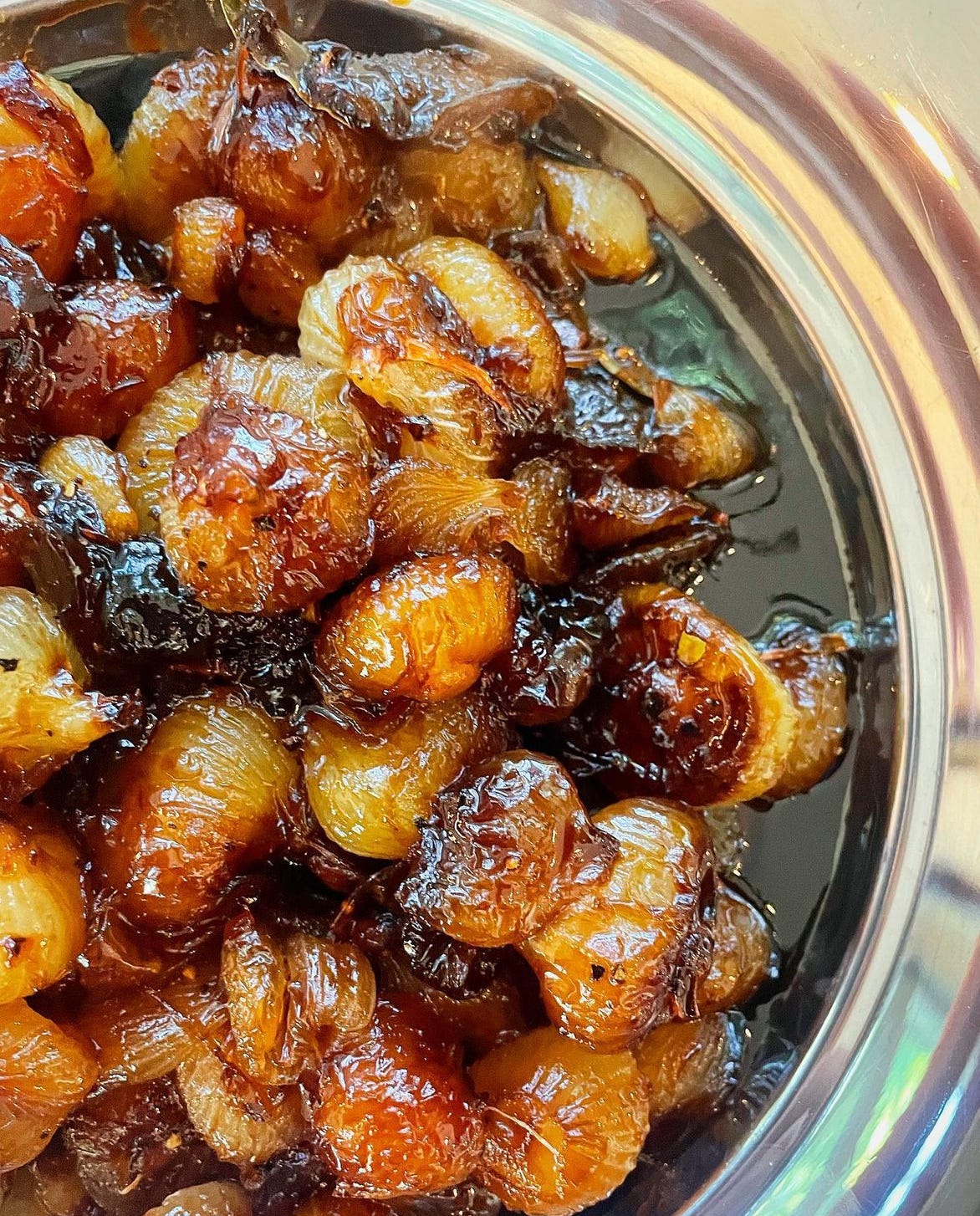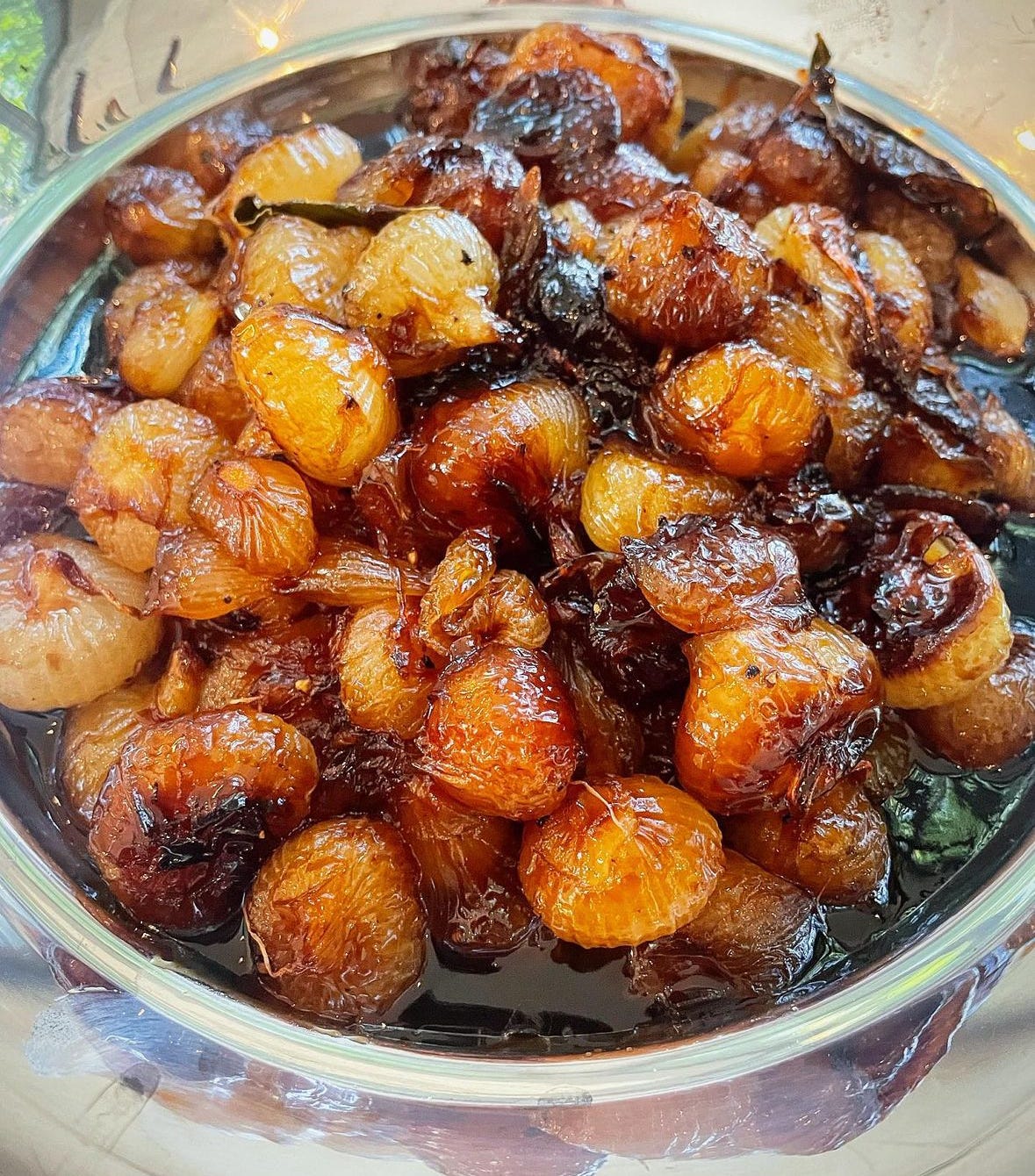The timeless technique of cooking agrodolce, or “sweet and sour” in Italy is most vividly embodied in the classic cipolline in agrodolce, a dish as humble as it is transcendent.
Agrodolce has its roots in Italy's diverse regional kitchens, each adapting the method to its local ingredients. The concept likely originated in Sicily, a crossroads of Mediterranean trade and culture, where Arab influences shaped the island's palate. Arab cooks introduced sweet-and-sour flavor profiles during their domination of the island in the 9th and 10th centuries, blending honey and vinegar in ways that resonate deeply with Sicilian cooking today. From there, the technique spread northward, embedding itself into the culinary traditions of mainland Italy.
In the north, particularly in Veneto and Lombardy, agrodolce evolved to suit colder climates and heartier fare such as preserved fruits, root vegetables, and onions, adapting the dish to their agrarian landscapes. Among these were cipolline, a diminutive variety of onion, which emerged as a shining star of condiments and contorni.
Cipolline, meaning “little onions,” are a unique variety of small, flat, and slightly elongated onions. In fact their shape is reminiscent of an Arab turban. These onions are prized for their delicate texture and nuanced flavor, which lacks the sharpness of larger onions and instead offers a mellow, earthy sweetness.
Typically harvested in autumn, cipolline were historically a staple of rural pantries, particularly in northern and central Italy. Their small size made them convenient for pickling, roasting, and preserving—practices crucial to surviving harsh winters. When glazed in a mixture of sugar (or honey) and vinegar, cipolline absorb the flavors beautifully, creating a dish that’s both rustic and refined.
The preparation of cipolline in agrodolce is deceptively simple, a reminder of Italy’s cucina povera, or "poor kitchen" tradition. The onions are peeled and gently simmered in vinegar, water, sugar & butter or olive oil. As the liquids cook down, a deep mahogany caramel is formed, glazing the onions in a lacquer of tangy sweetness, perfect for cutting through the richness of roasted meats and the saltiness of aged cheeses.
The Venetian recipe I tend to follow for cipolline in agrodolce features white wine vinegar and a touch of butter, as well as a generous crack of black pepper and a few small bay leaves. In Sicily, cooks might substitute honey for sugar and add pine nuts or raisins. Central Italian versions, particularly in Tuscany, might lean on balsamic vinegar for a deeper, richer profile.
The versatility of this technique for onions allows for pairing with everything from slow-cooked pork belly to seared scallops. The dish’s ability to marry seemingly opposing flavors continues to captivate me, proving that centuries-old techniques can remain profoundly relevant.
At its core cipolline in agrodolce represents what Italian cooking does best: elevating humble ingredients through careful technique and a deep understanding of flavor. It’s a dish that embodies life’s contrasts—sweetness and acidity, simplicity and sophistication—and invites us to savor the harmony in every bite.
As Italian nonnas have long known, sometimes the smallest onions make the biggest impact. And in their sweet-and-sour embrace, cipolline in agrodolce remind us of the importance of balance in the kitchen and life itself.
THE RECIPE
Keep reading with a 7-day free trial
Subscribe to CHESTER HASTINGS - The Recipes to keep reading this post and get 7 days of free access to the full post archives.













